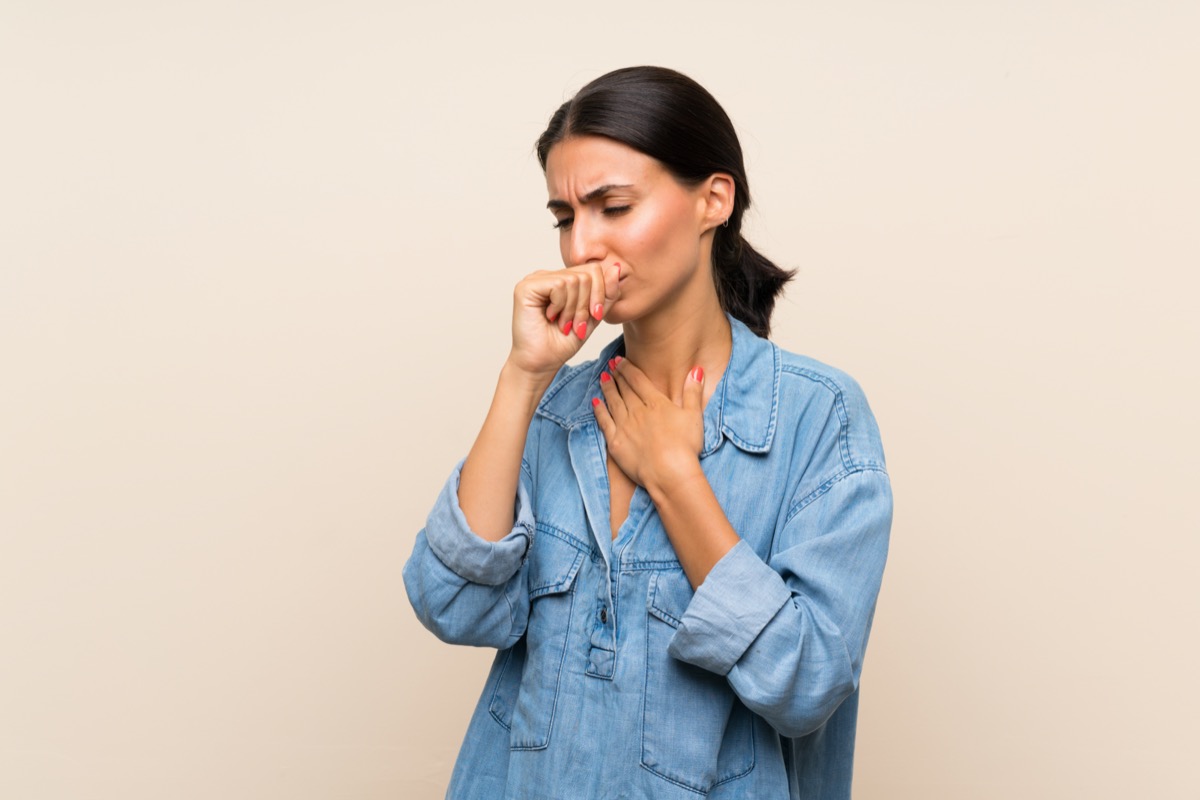Read on to find out what this new research discovered, and for more on what you can do to avoid the virus, Stop Doing This Immediately to Avoid the New COVID Strain, Doctors Warn.ae0fcc31ae342fd3a1346ebb1f342fcb The research team behind the new study—headed up by lead author Prof. Pedro Magalhães de Oliveira, an expert in fluid mechanics in the Department of Engineering at the University of Cambridge—created a mathematical model to predict how COVID spreads from an infected person in a room, taking into account the size of the space, the number of people present, the ventilation, and whether or not people were wearing masks. The assumption might be that actions that spread a lot of droplets—like sneezing, coughing, or shouting—are the most risky in terms of COVID transmission, but this new research out of the University of Cambridge and Imperial College London suggests otherwise. The larger droplets associated with coughing fell to the ground at a shorter distance and at a quicker pace, while the smaller droplets produced by talking carried the virus over 6.5 feet and lingered in a room for a longer period of time. “Speaking is a very important issue that has to be considered because it produces much finer particles [than coughing] and these particles, or aerosol, can be suspended for over an hour in amounts that are sufficient to cause the disease,” de Oliveira told The Guardian. And for more on COVID transmission, check out The Strange New Way You Could Get COVID, Study Says. The study found that when you’re in a poorly ventilated space and not wearing masks, talking is much more likely to spread the virus than a short cough. In one modeled scenario, the researchers found that after a short cough, the number of infectious particles in the air fell after 1 to 7 minutes, Live Science notes. But after speaking for 30 seconds, it took 30 minutes for the number of infectious particles to fall to similar levels. After an hour, a high number of particles were still suspended in the air, enough to make someone else sick. And for more tips on how to stay safe from the virus, check out how This One Hygiene Habit Could Protect You From COVID, Study Says. If you’re in a poorly ventilated room with an infected individual who’s speaking, you have as much as a 20 percent infection risk, the researchers found. “This analysis illustrates the risk associated with constant speaking in closed environments (as for example, in a lecture hall) due to a higher mass fraction of liquid resulting in small droplets during speaking,” the scientists concluded. And for more regular COVID news, sign up for our daily newsletter. The Cambridge team says “ventilation … is of utmost importance in minimizing infection risk indoors.” In a statement, de Oliveira said the study shows “how these small droplets can accumulate in indoor spaces in the long-term, and how this can be mitigated with adequate ventilation.” The team also used their findings to build an online calculator that can help users assess the risk of different indoor situations given the size of a room and the number of people in it. If you’re spending an hour in an average-sized store with a capacity of 50 people, for example, improving ventilation or wearing three-ply face masks can see your risk of infection decrease from 8 percent to 2 percent. “The idea is not to obtain absolute risk figures from the tool, but to use it to see how mitigation strategies impact risk of infection,” de Oliveira told The Guardian. And for more on where the COVID outbreak is the worst right now, check out This Is How Bad the COVID Outbreak Is in Your State.


